Trebic, Czech Republic: A 3-part UNESCO site
The small town of Trebic is about two hours southeast of Prague in the Czech Republic, and the thing to see in Trebic is its UNESCO site.
When I say “UNESCO site” though, I’m really referring to three sites that UNESCO has combined into one: the old Jewish Quarter, the old Jewish cemetery, and a Catholic Basilica. While this seems a strange combination, UNESCO’s World Heritage website explains it in terms of the historically peaceful coexistence of the two communities.
(Disclosure: This article contains one or more affiliate links. If you make a purchase through one of these links, I will receive a small percentage. It will not affect your price.)
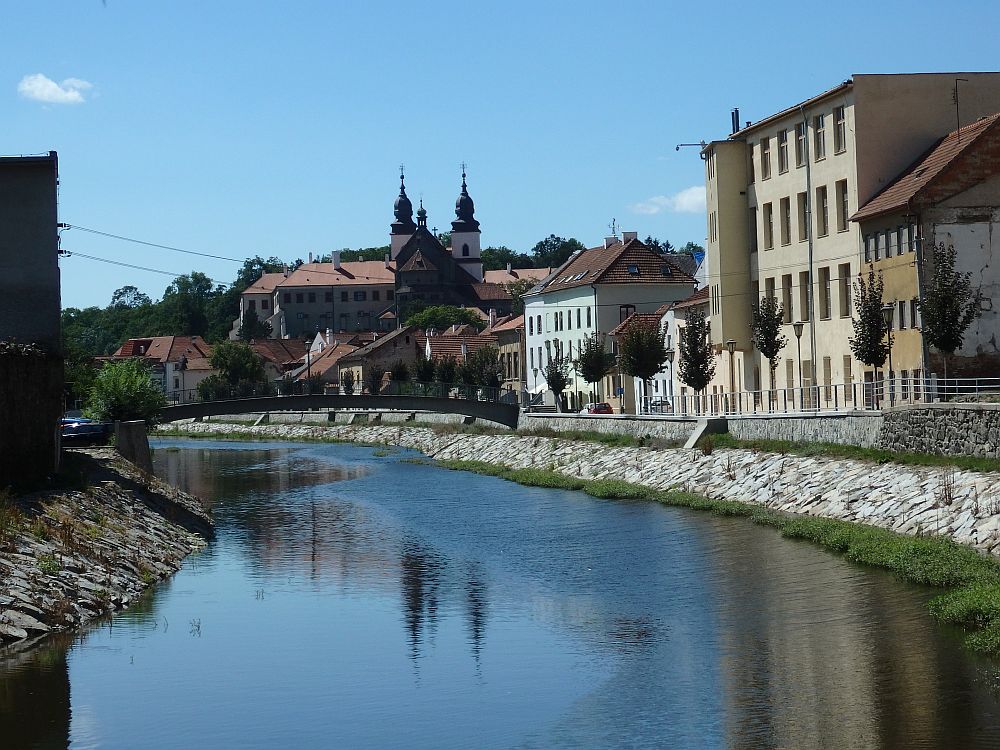
The Trebic Jewish Quarter
Jews started settling in Třebíč (its proper spelling) in the Middle Ages, living relatively peacefully among the majority Christians in the town. They were craftsmen (especially tanners) or traders. However, in 1723, the local noble, Jan Josef von Valdštejn, ordered the Jews and Christians to exchange houses in order to limit the Jews to an area on one side of the Jihlava river. He also limited the number of families living there.
This situation lasted until this law was abolished in 1849. After that, some of the wealthier families moved away or to other less crowded parts of town. The housing in the Jewish Quarter became more mixed again.
World War II, however, spelled the end of the Trebic Jewish community, with only 10 of the 281 Jews who had lived in Trebic surviving the war.
Trebic Jewish Quarter’s small buildings remain: tightly packed together along cobbled streets in a charmingly jumbled way. Some still have the original vaulted ground floors that were (and in some cases still are) used for commercial purposes or as workshops. These ground floor spaces offered (and still offer) access to the residents of the apartments upstairs. Make sure, if you visit, to keep an eye out for any that have been left open. Take a peek in to see the old stone vaulting.
Here are some other posts about sights in the Czech Republic that you might enjoy:
Visitors can enter one of the original two synagogues, called the Rear Synagogue, dating from the 19th century.
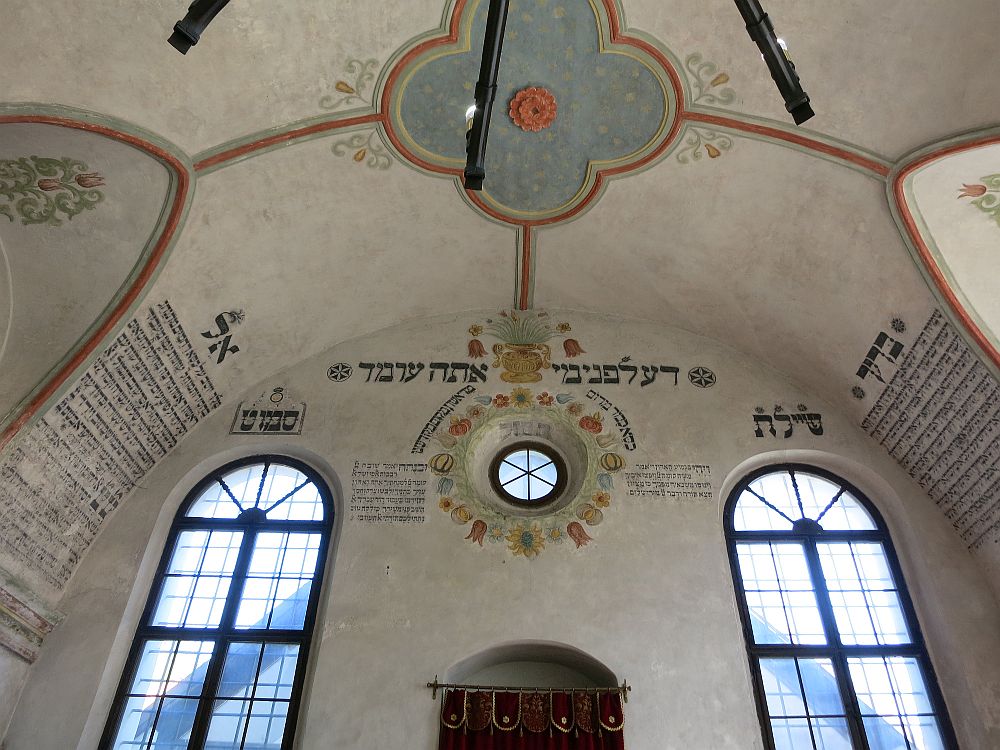
One house next to the Rear Synagogue is now a museum: Seligmann Bauer’s House. We were not able to see it when we visited, but it apparently shows a “typical Jewish household” in the Jewish Quarter.
The other synagogue, called the Front Synagogue (17th century) is now home to a Czechoslovakian Hussite church.
St. Procopius Basilica
You can walk between the three parts of Trebic UNESCO site. The Jewish Quarter extends along the riverbank, while the Basilica looms from a small hill further along the river. You can get to the Basilica by climbing a path up the hill.
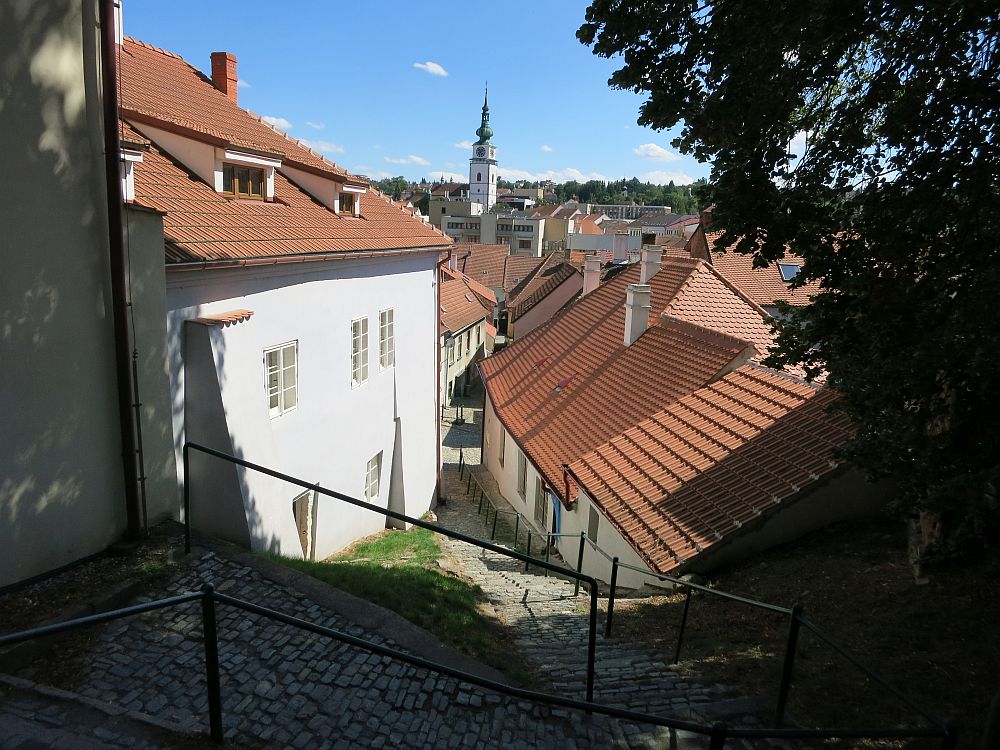
Built in the 13th century, St. Procopius Basilica was originally part of a Benedictine monastery. The UNESCO description calls it “one of the first examples of the influence of Western architecture in Central Europe.” While the front has white plaster and gothic arches, the back, where the stone structure is visible, betrays its medieval origins in Romanesque style.
If you walk up there, make sure to go to the garden behind it, where you’ll find a great view over the rooftops of the Jewish Quarter.
The old Jewish cemetery
The third part of Trebic UNESCO site is the Jewish cemetery, up a hill away from the river. It’s not as dramatic as the Jewish cemetery in Prague, probably because the community was allowed much more room to bury their dead in Třebíč. Nevertheless, it makes for a meditative walk among the stones under the trees. Opened in the 17th century, some of the gravestones boast ornate Baroque-style ornamentation.
Trebic town
While the UNESCO site consists of just the Jewish Quarter, the Basilica and the Jewish cemetery, the town of Trebic, on the other side of the river, is worth seeing too, with some lovely restored sgraffito and painted buildings. Sgraffito is a technique in which the artist uses different colors of plaster, rather than paint.
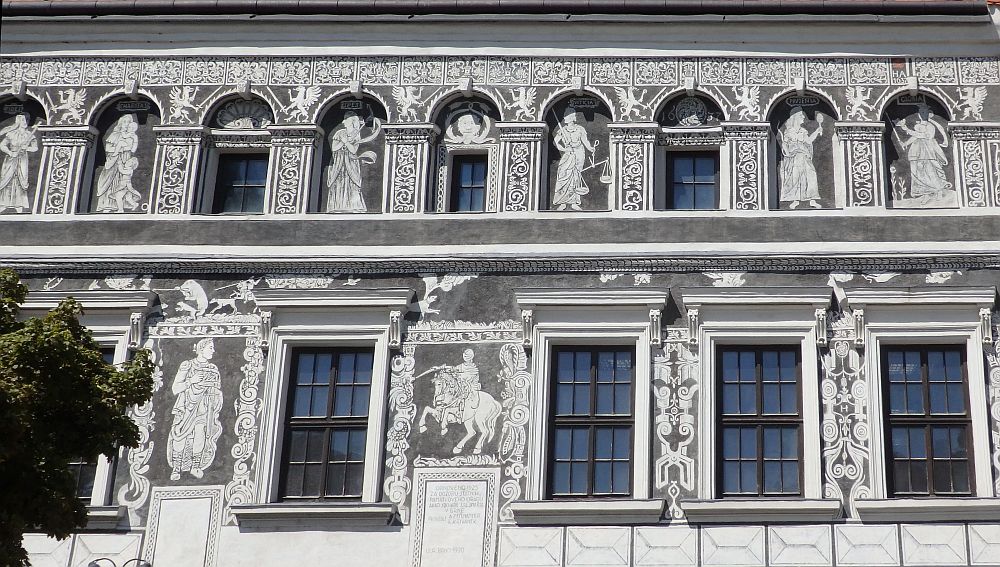
The large main square, Karlovo Square, dating to the 14th century, is ringed by a collection of historical buildings.
You might want to stay overnight in Trebic so you can take your time to see everything well. Click here to book accommodations.
Visiting Trebic, Czechia
Getting there: If you have a car, Trebic is about two hours on route E50 from Prague. From Brno, also in Czechia, it’s about an hour, taking the E50 and then the 360.
You can take a train from Prague, but the route will involve at least one transfer and will take three to four hours. From Brno there are direct trains that take an hour. From the train station in Trebic you can walk to the Jewish Quarter in about 15 minutes, and you’ll pass Karlova Square on your way.
Of course, the easiest way to see Trebic is with a tour from Prague.
The Jewish Quarter: Trebic is a living town, so there’s no entrance fee to see the Jewish Quarter.
Rear Synagogue: Admission to only the Rear Synagogue is 50CZK (€2/$2.20) without a guide. The basic admission price to both the Rear Synagogue and the Seligmann Bauer’s House is 100CZK (€4/$4.50). Tours of both the house and the museum in English cost extra. Tours start on the hour except at noon. Open daily January-June and September-November 9:00-17:00, July-August 9:00-18:00 and December 9:00-16:00.
St. Procopius Basilica: Admission is 100CZK (€4). Tours in English start on the hour except noon and the hour before closing, and they cost extra. Tours may be cancelled in case of church ceremonies. Open June-September: Monday-Thursday 9:00-11:00 and 13:00-17:00, Friday 9:00-11:00, Saturday and Sunday 13:00-18:00. Open October-May: Monday-Thursday 9:00-11:00 and 13:00-17:00, Friday 9:00-11:00 and 13:00-15:00, Saturday and Sunday 13:00-17:00.
The Jewish Cemetery: Free admission. Open daily: May-October 9:00-18:00, March and April 9:00-17:00, November-February 9:00-16:00.
Please consider sharing this article on social media!
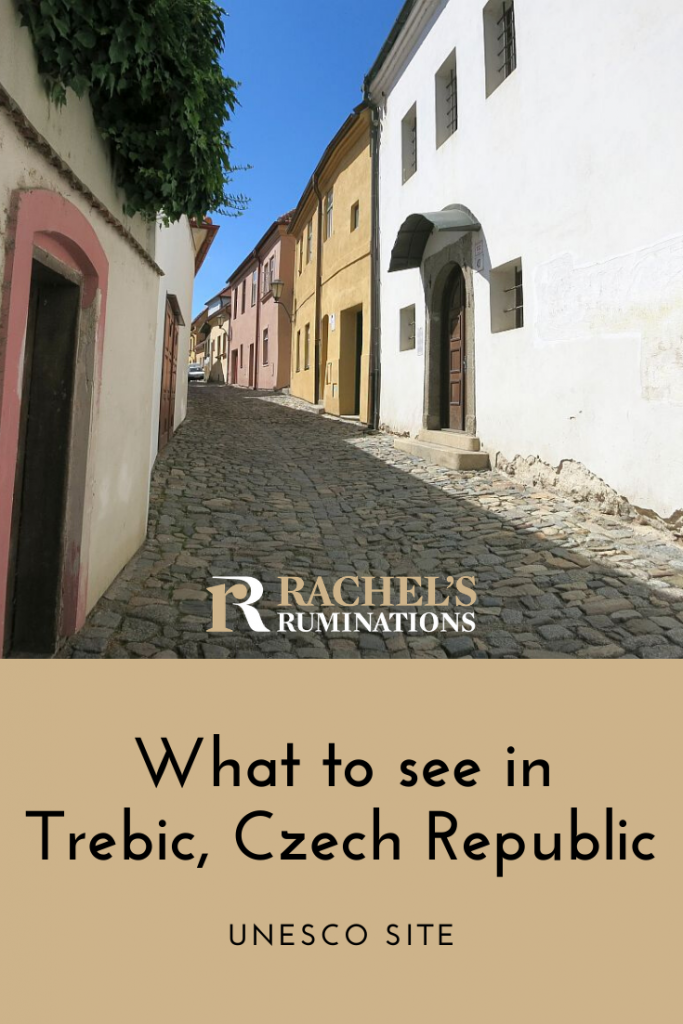
My travel recommendations
Planning travel
- Skyscanner is where I always start my flight searches.
- Booking.com is the company I use most for finding accommodations. If you prefer, Expedia offers more or less the same.
- Discover Cars offers an easy way to compare prices from all of the major car-rental companies in one place.
- Use Viator or GetYourGuide to find walking tours, day tours, airport pickups, city cards, tickets and whatever else you need at your destination.
- Bookmundi is great when you’re looking for a longer tour of a few days to a few weeks, private or with a group, pretty much anywhere in the world. Lots of different tour companies list their tours here, so you can comparison shop.
- GetTransfer is the place to book your airport-to-hotel transfers (and vice-versa). It’s so reassuring to have this all set up and paid for ahead of time, rather than having to make decisions after a long, tiring flight!
- Buy a GoCity Pass when you’re planning to do a lot of sightseeing on a city trip. It can save you a lot on admissions to museums and other attractions in big cities like New York and Amsterdam.
Other travel-related items
- It’s really awkward to have to rely on WIFI when you travel overseas. I’ve tried several e-sim cards, and GigSky’s e-sim was the one that was easiest to activate and use. You buy it through their app and activate it when you need it. Use the code RACHEL10 to get a 10% discount!
- Another option I just recently tried for the first time is a portable wifi modem by WifiCandy. It supports up to 8 devices and you just carry it along in your pocket or bag! If you’re traveling with a family or group, it might end up cheaper to use than an e-sim. Use the code RACHELSRUMINATIONS for a 10% discount.
- I’m a fan of SCOTTeVEST’s jackets and vests because when I wear one, I don’t have to carry a handbag. I feel like all my stuff is safer when I travel because it’s in inside pockets close to my body.
- I use ExpressVPN on my phone and laptop when I travel. It keeps me safe from hackers when I use public or hotel wifi.


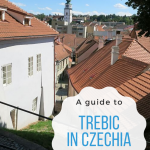
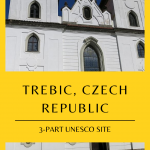
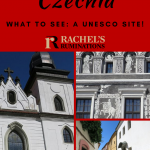
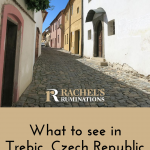
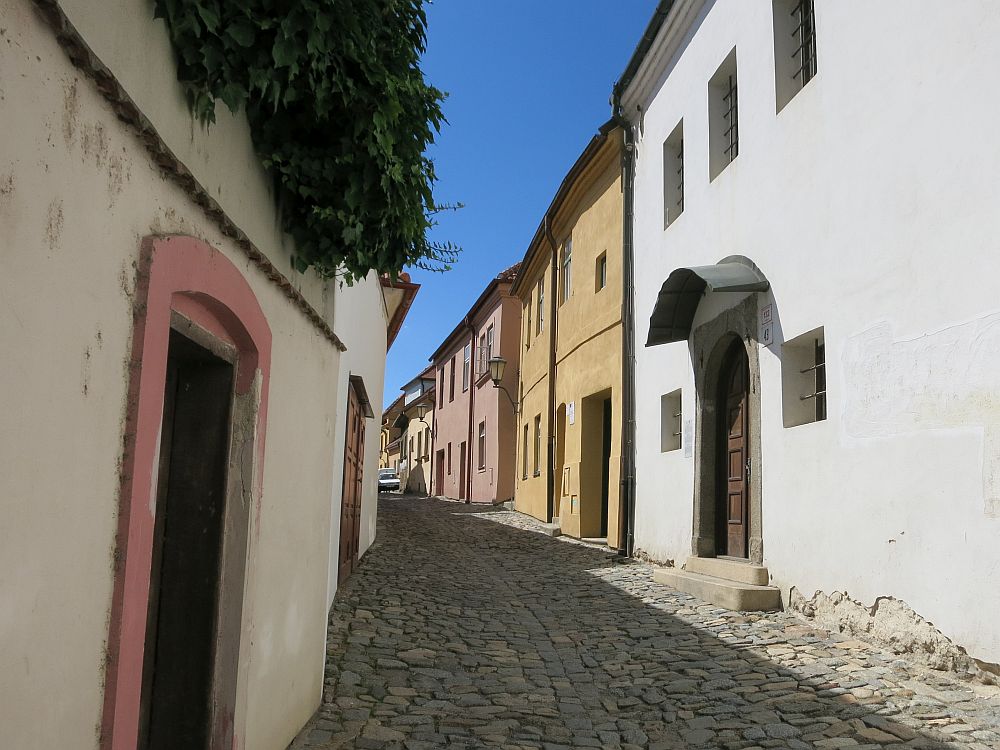
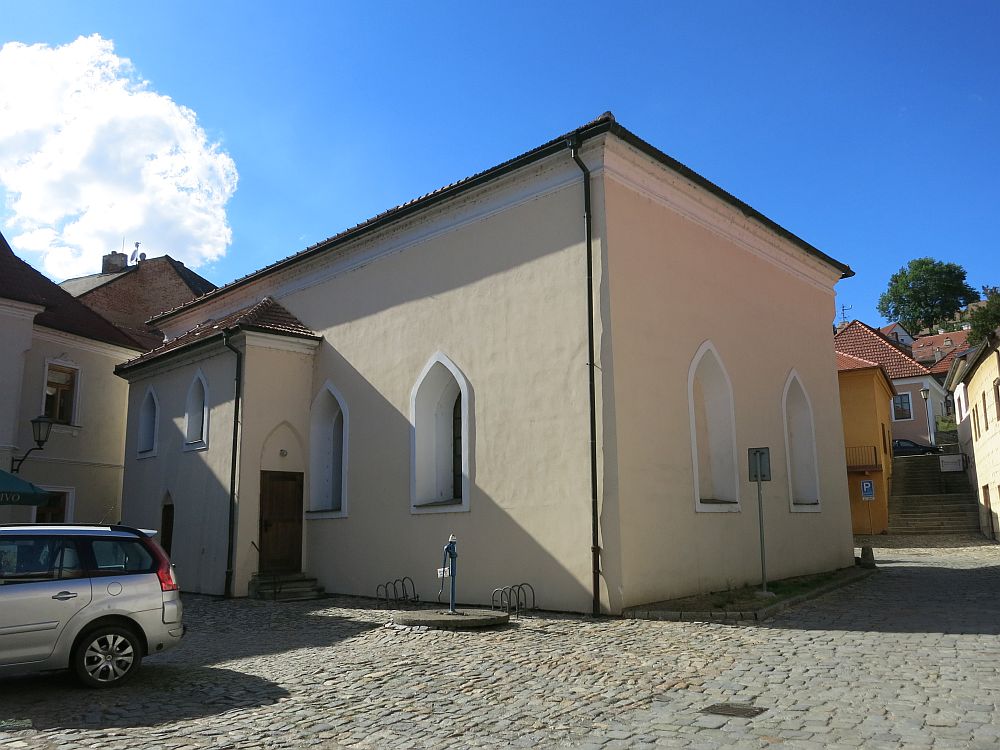

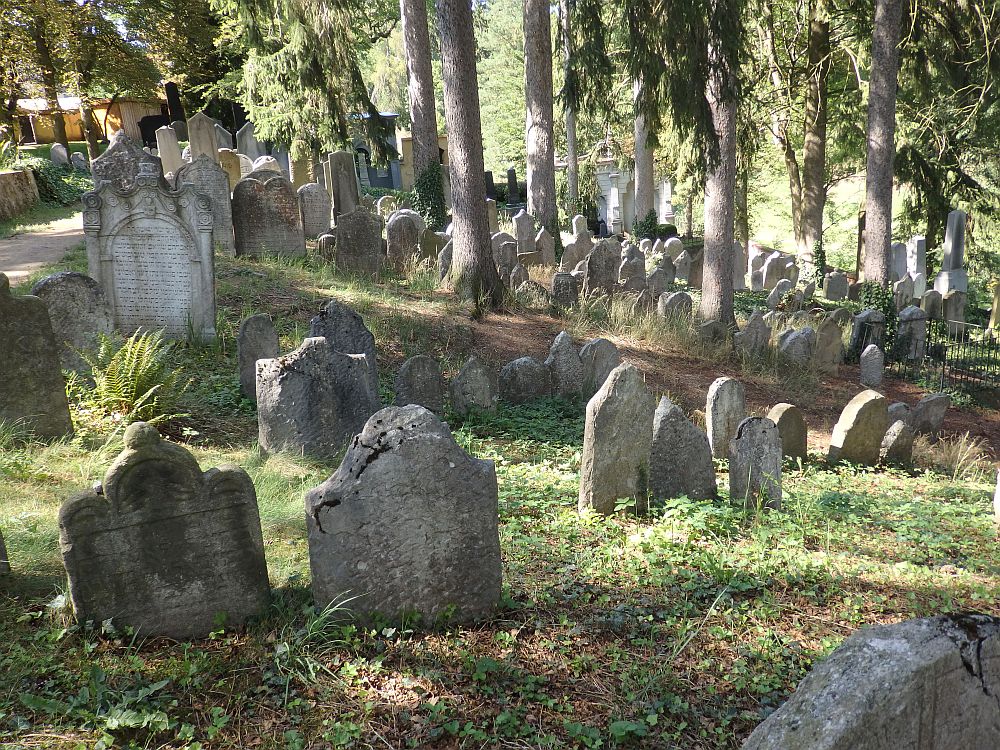
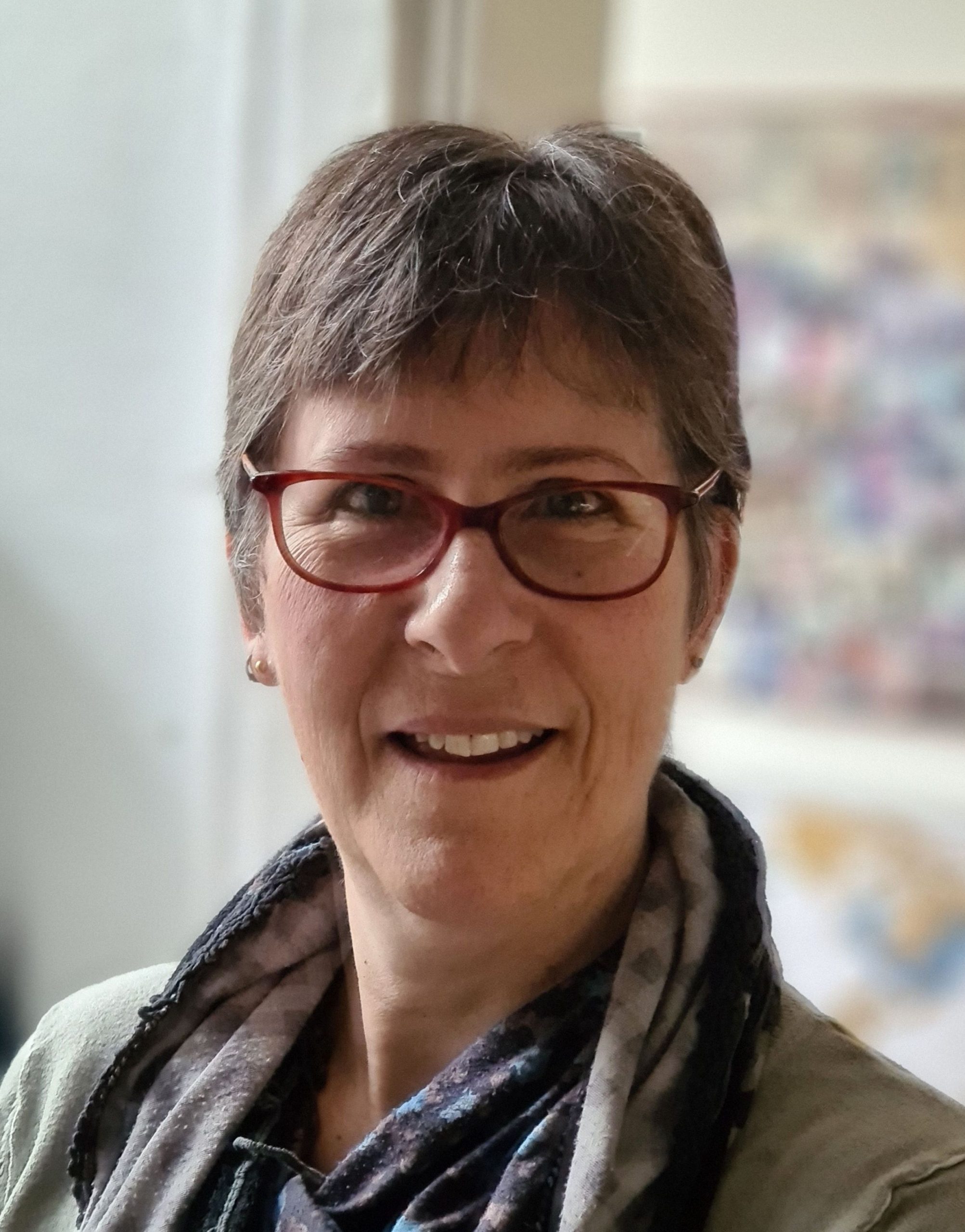
Thanks for the reminder of that delightful town. We understood that the ghetto was concentrated on that side of the river because with the steep bluff behind it could easily have controlled access/egress. We always visit cemeteries and in Třebíč , like so many of the Jewish cemeteries, we were struck by the proud monuments to the Jewish soldiers who died in WWI. So….sad?, ironic? ahhh.
I hope we can all travel soon.
The link provided is to our Třebíč, Telč and Tábor page on our admittedly not so organized Flickr page 🙂
Thanks Rachel!!
best,
Joseph and Mitchell
Nice photos! Thank you!